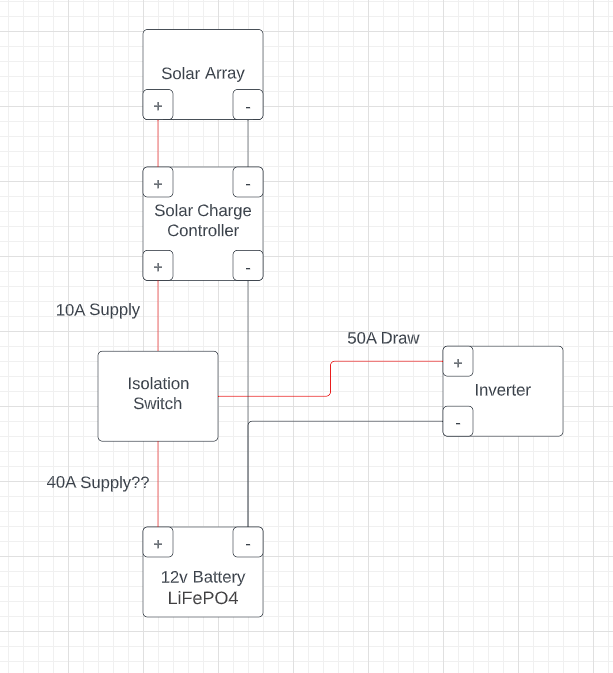I want to understand what happens when a solar charger is charging the battery while the inverter is also drawing a load from the battery. Say theoretically the charge controller supplies 10A and the inverter needs 50A for its load. The way I see it, with the Inverter off, the 10A from the charge controller is going directly to the positive terminal of the battery. But when turn on the inverter and draw 50A, current cant flow both ways on the positive line from the switch to the batttery so I assume that the 10A from the solar charger goes to the inverter and the battery makes up the difference sending 40A. Is my thinking wrong? Also does it matter if positive lines meet at the isolation switch vs at the battery terminal?
This is a basic diagram without fuses ect of what I describe

